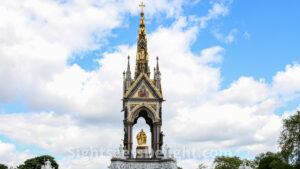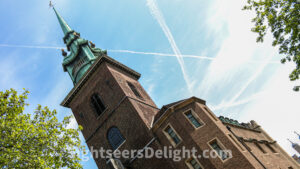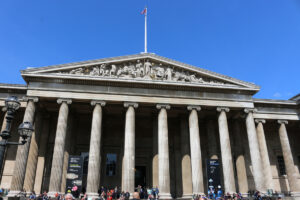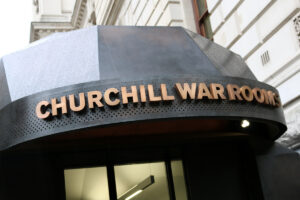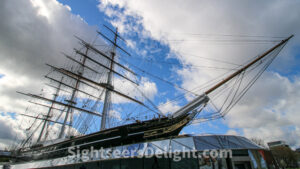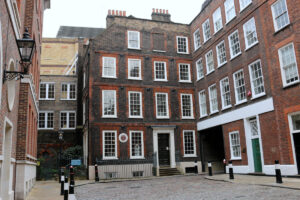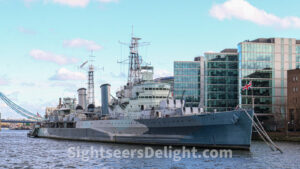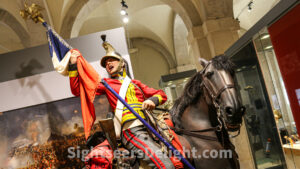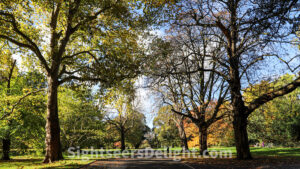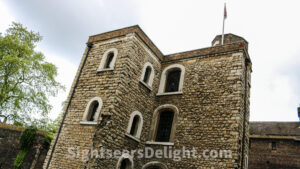The Albert Memorial, located north of the Royal Albert Hall in Kensington Gardens, London, was constructed in honor of Prince Albert, Queen Victoria’s dear husband, who passed away in 1861. Sir George Gilbert Scott designed the ornate pavilion, which stands at a height of 176 feet (54 m) and resembles a Gothic ciborium over the high altar of a church. Inside the pavilion, there is a south-facing statue of Prince Albert. It took more than ten years to construct and was funded by public subscription, costing £120,000 (roughly £10 million in 2010). The Queen inaugurated the memorial in July 1872, and the statue of Albert was ceremonially “seated” in 1876, and it was classified as Grade I in 1970.
All Hallows-by-the-Tower is a historic Anglican church located on Byward Street in the City of London, England. It was dedicated to All Hallows (All Saints) and the Virgin Mary and was sometimes called All Hallows Barking. According various sources, it is believed to be the oldest church in the City of London, founded in AD 675. However, recent research has cast doubt on this claim. Despite surviving the Great Fire of London in 1666, the church suffered significant damage during the Blitz in World War II. It underwent extensive reconstruction and was rededicated in 1957. The church served as the guild church of Toc H, an international Christian organization founded by Tubby Clayton, who served as the church’s vicar from 1922 to 1962.
The British Museum is home to one of the most significant collections of artifacts related to human history, art and culture, including the Rosetta Stone. The museum is home to more than 100,000 objects from the Classical world, making it one of the most comprehensive collections of antiquities from that era. It was established in 1753 and primarily based on the collections of the physician and scientist Sir Hans Sloane. The museum, located in the Bloomsbury section of London, first opened on Jan. 15, 1759. More than 5.8 million people visit the museum annually, making it the most visited museum in England.
To run the government and military during World War II, Prime Minister Winston Churchill needed a place safe from German bombing raids. He found that place in a sprawling underground complex today known as the Churchill War Rooms. The complex was operational starting Aug. 27, 1939, a week before Great Britain declared war on Germany. The museum complex offers an incredible, one-of-a-kind look at Winston Churchill and England’s approach to World War II. The complex is home to meeting rooms, bedrooms and map rooms, where the war’s progress was plotted and monitored.
The British clipper Cutty Sark was built in Dumbarton, Scotland, in 1869 for the Jock Willis Shipping Line as one of the last tea clippers. The vessel was built at the end of a long design development period, which halted as sailing ships gave way to steam propulsion. The Cutty Sark spent just a few years on the tea trade before turning to the wool trade yo and from Australia and held the record time to Britain. In 1895, the Portuguese company Ferreira and Co. purchased the vessel and renamed it Ferreira. It worked as a cargo ship until in 1922 when retired sea captain Wilfred Dowman purchased it.
Dr. Samuel Johnson wrote the dictionary. Literally. Between 1748 and 1759, Johnson paid a £30 rent, and while living in the house compiled his seminal work, A Dictionary of the English Language, published in 1755 and heralded as “one of the greatest single achievements of scholarship.” Wool merchant Richard Gough built the house during the latter half of the 17th century, and after Johnson moved out, the building was used for a number of purposes. The edifice was damaged during World War II, damage that can still be seen today.
The Royal Navy light cruiser HMS Belfast was commissioned on Aug. 5, 1939, and built by Harland and Wolff shipyard in its namesake city of Belfast. This is the same company that built another famous ship, the Titanic. The Belfast saw action during some of the most pivotal battles of World War II, including the invasion of Normandy on June 6, 1944.
The Household Cavalry Museum preserves and interprets the history of the Regiments of the Household Cavalry, which dates back more than 350 years. The museum opened in June 2007 in the historic Horse Guards building. The museum includes working stables in addition to an extensive collection of historical artifacts.
Hyde Park is a historic Grade I-listed urban park in Westminster, Greater London, spanning more than 350 acres. This park and green space stretches from Kensington Palace to St James’s Park and, along with Kensington Gardens, Hyde Park, Hyde Park Corner, Green Park, and Buckingham Palace, forms a chain of greenspace. It is divided by the Serpentine and the Long Water lakes. Henry VIII established the park in 1536, taking the land from Westminster Abbey and using it as a hunting ground. It opened publicly in 1637 and quickly became popular, particularly for May Day parades. In the early 18th century, Queen Caroline directed major improvements to the park. During this time, the park was frequently used for duels, particularly by members of the nobility.
The 14th century Jewel Tower was one part of the royal Palace of Westminster. The edifice was built between 1365 and 1366 to house the personal treasure of Edward III.

